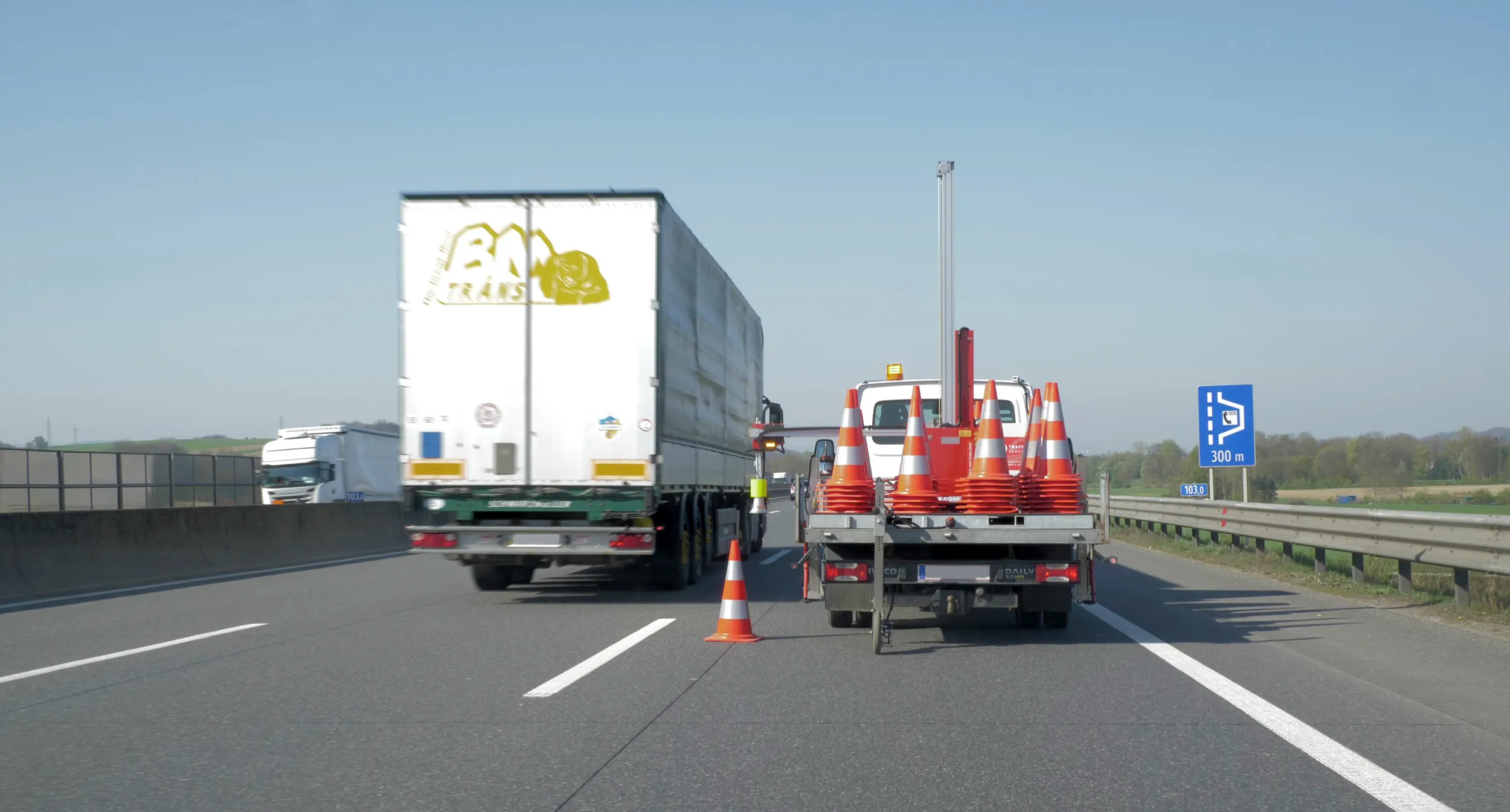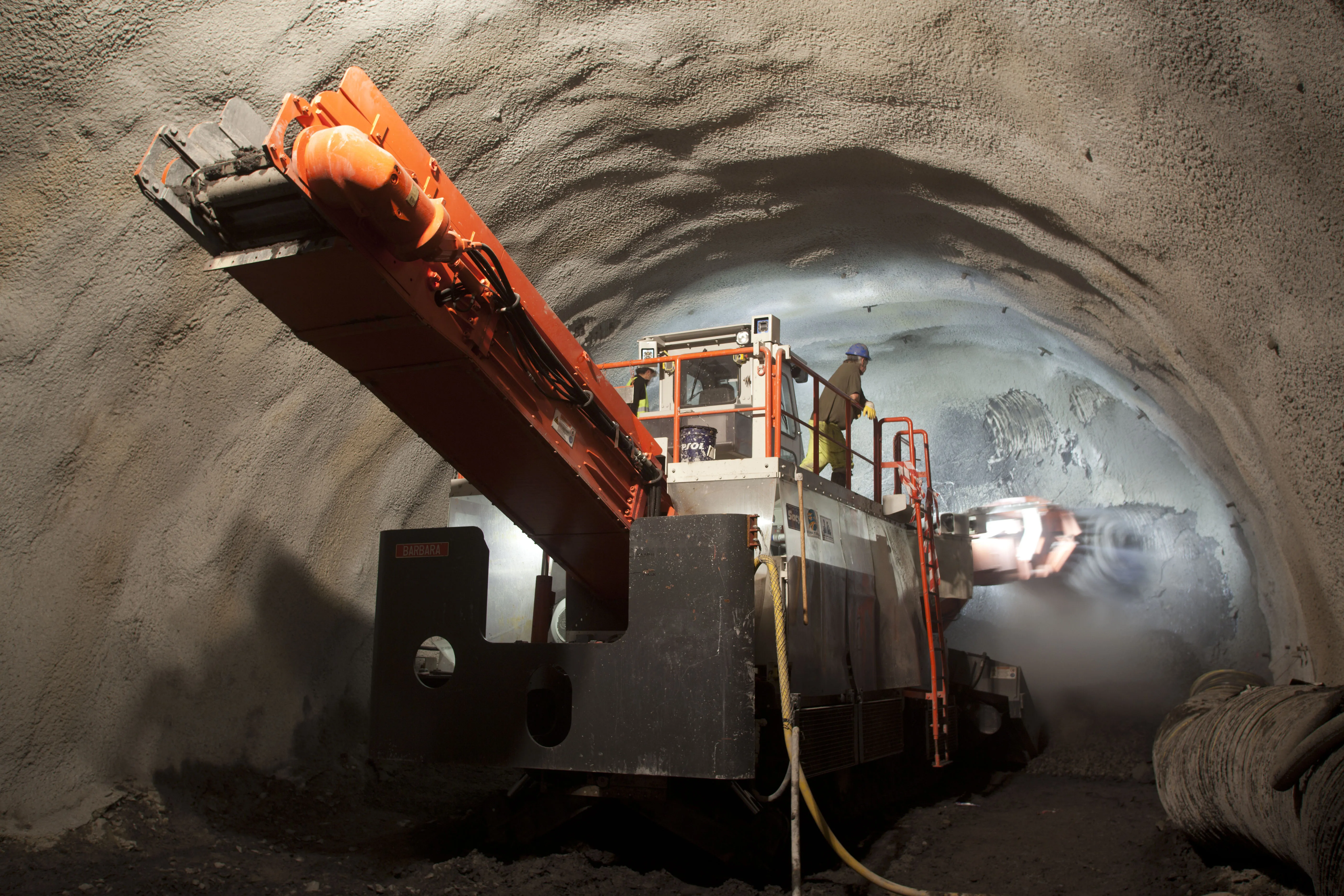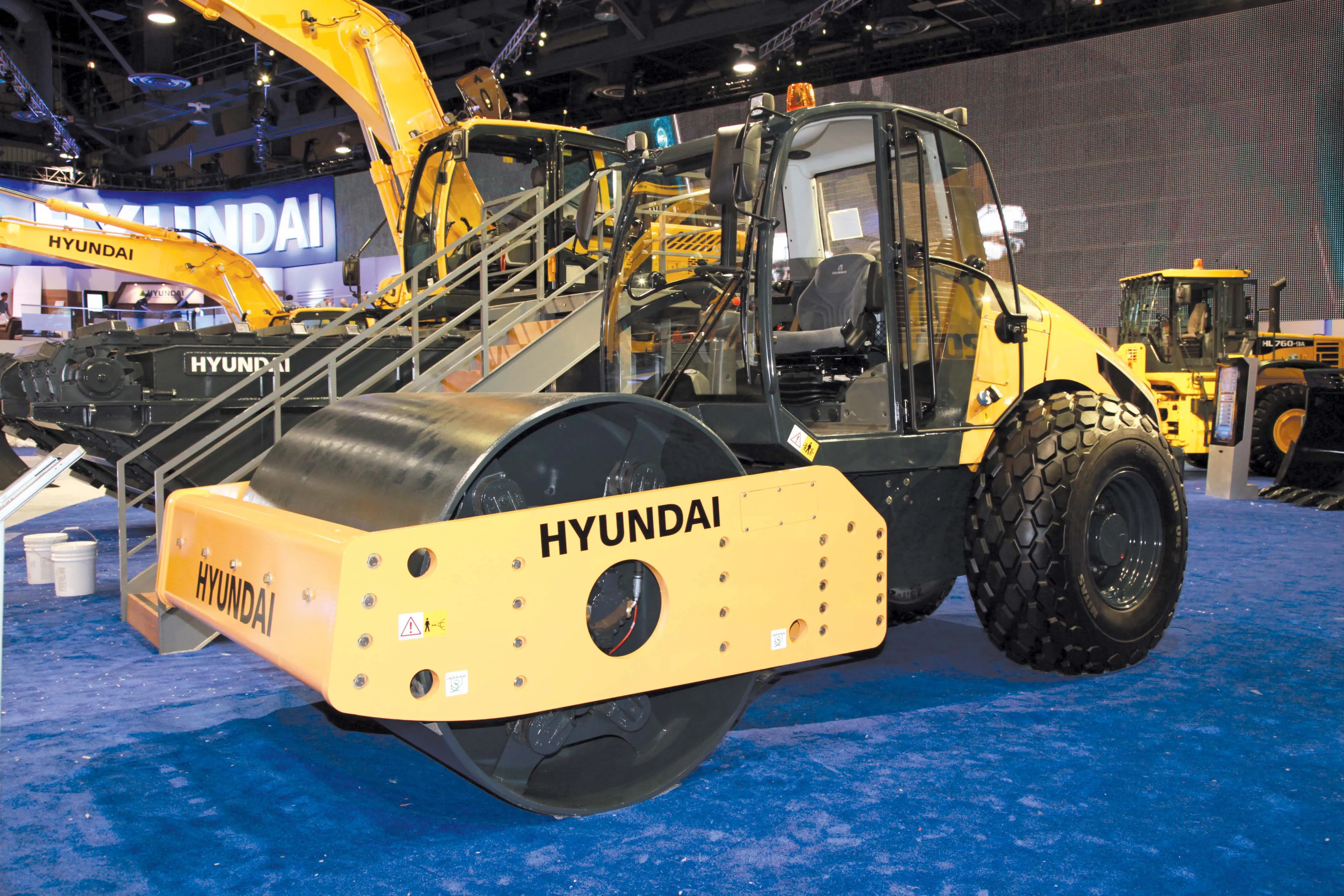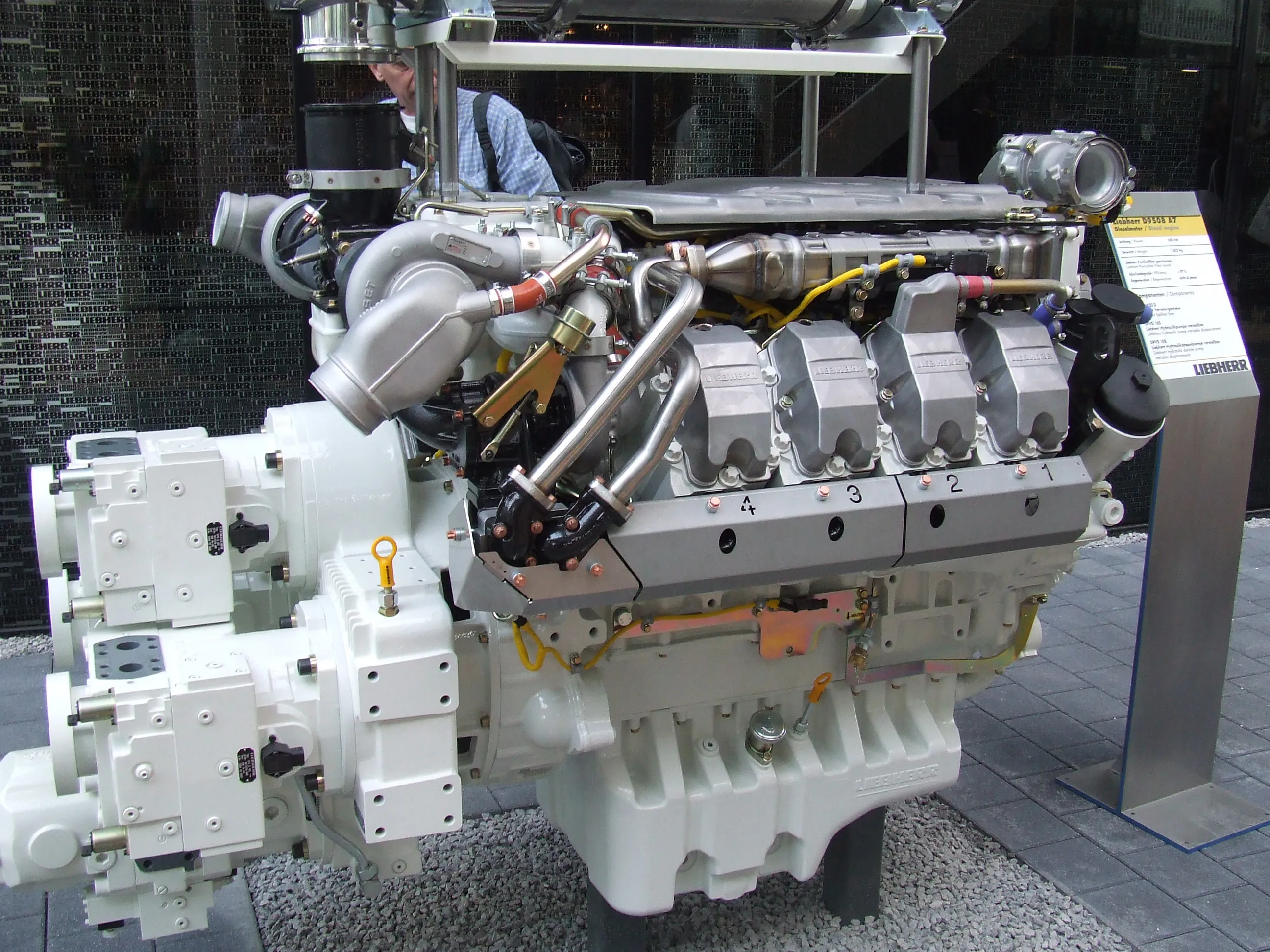
X-Cone is a fully automated traffic-cone management system offering increased worker safety and maximum efficiency for contractors, according to the manufacturer, Franz Janschitz.
By using the illuminated 177mm (7″) touchscreen control unit, the driver can select the desired cone spacing, which can be set from 10m upwards. Once set, X-Cone deploys and collects traffic cones without manual intervention.
X-Cone has a lightweight, predominantly aluminium, construction weighing around 600kg and with a life expectancy of 10 or more years but requires minimal maintenance.
X-Cone has a maximum load capacity of 224 traffic cones, dependent upon cone type and size. It has an operating rate of six traffic cones per minute, allowing for 1km of cones at 36m spacing to be deployed or collected in around five minutes.
Also, cones can be deployed and collected from either side of the vehicle; this allows for maximum flexibility when working with or, where appropriate to do so, against the traffic flow.
Operators are not required to work on the loading bay of the vehicle and the system can be operated by one person only – the driver.









